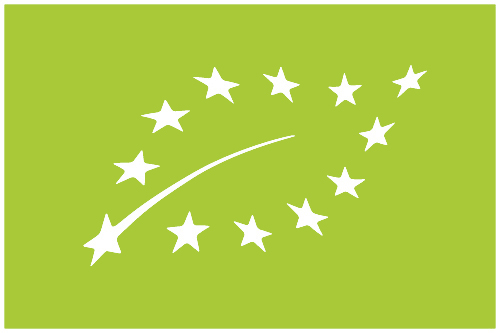
Filipa Pato
“Authentic Wines without Makeup”
by Filipa Pato and William Wouters
Biodynamic wine made with intuition, skills and knowledge!
Filipa Pato is a prominent figure in Portuguese winemaking, especially in the Bairrada region, where she creates wines that blend tradition with innovation. Her wines are defined by their elegance, balance, and expression of terroir. She works with local grape varieties like Baga, Arinto, and Bical, and embraces biodynamic and sustainable viticulture. With a philosophy of minimal intervention and a focus on quality, Filipa Pato's wines reflect a deep respect for the land and the region, while also appealing to contemporary wine lovers looking for freshness, complexity, and purity in their wines.
Century-Old Vineyards: The presence of century-old vineyards is attributed to unique locations protected by forests and the adaptability of the Baga grape to the environment.
They own 20 hectares of vineyard, mainly in 3 villages and scattered over 36 plots. "We have even one small vineyard - called “Missão” (0,6 ha) of prephylloxera Baga planted back in 1864." - Filipa Pato
Pig Breeds for Sustainable Vineyard Management:”The use of our special breed of pig, a crossing of the small Vietnamese pig with the medium Portuguese Bísaro pig. They do an amazing job in the old vineyards where we cannot use tractors to plow and aerate the heavy soils. They dig the soil thoroughly, adding their excrements that enhances soil fertility and reduces the alkalinity of the limestone based soils (Bairrada soils tend to be very alkaline). Even more, by scratching their bodies on the vine trunks, they clean it and contribute to the vine's health.” - Filipa Pato
”Embracing a biodynamic philosophy, we meticulously integrate local flora to foster a symbiotic relationship with the vineyard ecosystem, promoting sustainability and enhancing vitality for thriving harmony with Bairrada's unique terroir.” - Filipa Pato
In the vineyard:
- Biodynamic farming – no pesticides or herbicides.
- 20 hectares of vineyard, mainly in 3 villages and scattered over 36 plots
- The soils are mainly limestone and clay, all mid slopes and eastern orientation.
- Dry farming practices – No irrigation
- Early harvest - to obtain a balance between sugar, phenolic ripeness and the precious acidity.
- Low yields - For Baga, 30hl/ha is an absolute maximum. In some vineyards, it's down to 10hl/ha.
- Jurassic-era Limestone Soil - that is a fundamental element of Bairrada's terroir.
- In winter, Sheeps are employed for natural fertilisation and weed control.
- Soft pruning - respecting the vigour of each old vine
- Plantings of biodiversity in the vineyards – E.g orange, lemon, tangerine and lime trees.
- Usage of homemade herbal extracts and oils to combat pests and diseases.
- The bunches are hand-picked and hand-selected
In the cellar:
- Pneumatic press - for a slow extraction
- Barreling after a slight settling for maturation
- Indigenous yeasts
- Bottling is done according to the lunar calendar
- Maturation in used oak barrels
"Nossa!”??
The name is spontaneously evocative (Wow, Amazing, Grand, my goodness!). "Calcário” means "chalk" in Portuguese, which refers to the calcareous soil found in their vineyards.
Wine info:
Nossa Calcário, Baga BIO
- The bunches are hand-picked and hand-selected.
- Partly destemmed, fermented with indigenous yeasts in open oak “lagares” with some extraction (pigeage).
- After fermentation, the wine is aged for 12-18 months (depending on the vintage) in 500-600 l used oak “pipas” and 1500 l barrels.
- Matured in bottle for 2 months.
- The different small plots for this wine come from 3 centenary Baga vineyards (100-140 years old) with a very strong Atlantic influence (only 15 km from the ocean).
- 2022 - Total production: 4590 bottles
- Tot. acid content g/l (tartaric acid): 5.72
Nossa Calcário Bical BIO
- Manual harvest.
- Sorting on the vine then in the vat and finally pressing (pneumatic press) to obtain a slow extraction.
- Barreling after a slight settling.
- The grapes are put in oak barrels of 500-600 l and one vat of 2000 litres in which the alcoholic and malolactic fermentations in indigenous yeasts and native bacteria will take place.
- Breeding will be on fine lees for 10 months, without stirring.
- One month before bottling, the wine from different barrels is placed in a stainless steel tank for blending.
- Bottling is done according to the lunar calendar.
- Matured in bottle for 2 months.
- 2023 - Total production: 10266 bottles.
- Tot. acid content g/l (tartaric acid): 5.96g
3B Blanc de Blancs
- Bical (88%), Maria Gomes (10%) and Cercial (2%)
- Matured 9 months in the bottle, prior to release.
- The grapes are harvested by hand and pressed very gently.
- First fermentation in tank with wild yeast,
- Secondary fermentation in the bottle - classical method.
- Harvest starts in August to maintain the fresh and fruity character of the grapes
- Zero dosage
- Tot. acid content g/l (tartaric acid): 5.1g
D.N.M.C. Baga
- The grapes are handpicked from different vineyards in Bairrada.
- The vineyards are fully controlled by Filipa and William.
- Fully destemmed.
- Fermented in tanks with very little extraction and long maceration on the skins.
- Tot. acid content g/l (tartaric acid): 5.62g
- Matured in bottle for 2 months.
D.N.M.C. Bical & Arinto
- Bical (80%), Arinto (20%)
- 10% in oak 500-600 l pipas
- The grapes are handpicked from different vineyards.
- Whole bunches were pressed and fermented with indigenous yeast in a temperature-controlled tank.
- 10% is fermented in casks of French oak (500-600 l pipas).
- Bical is harvested in the beginning of September, the Arinto matures later and is harvested 2-3 weeks later. Vinification happens separately.
- The wine matures on the lees without batonnage. The wines stabilize naturally during the cold winter.
- The final blend is made in early springtime when the wine is stable.
- Tot. acid content g/l (tartaric acid): 4.75 T
- Matured in bottle for 2 months.


